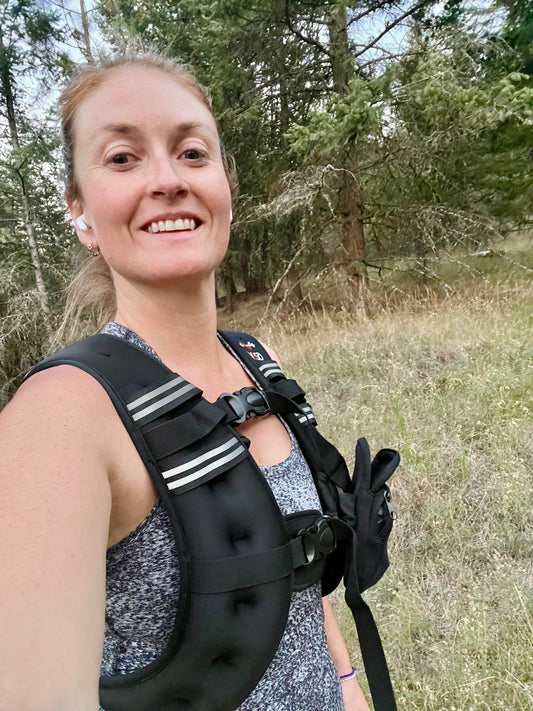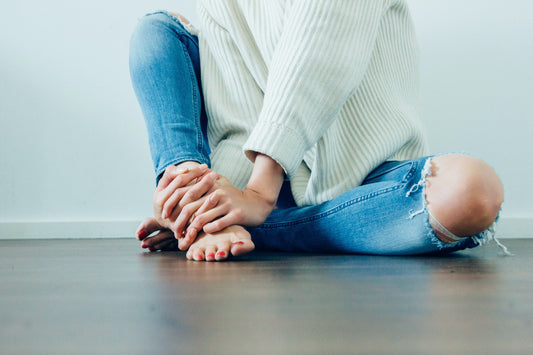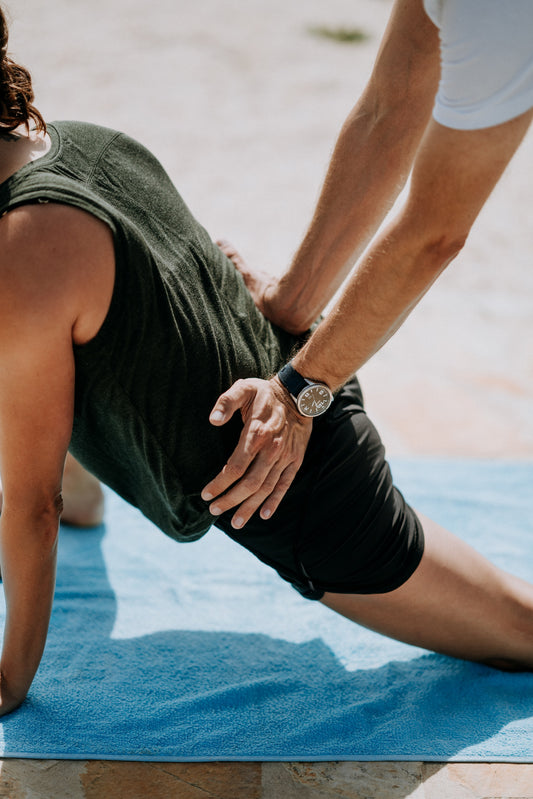There’s a great deal of information available to the curious or the trained eye when you take a look down at your feet.
Once you learn to walk, feet are your main point of contact with the ground. Feet are our foundation holding us up. A wonky foundation on a building is likely to show up in uneven floors, cracks in the wall and wobbly furniture.
Just like hundreds of dominoes stacked up in a fancy pattern, our body is stacked up on top of our feet. Every moment there is a chain reaction reverberating to and from each body part and your feet at the end of that long domino chain. If there’s an injury or a habitual movement somewhere along that chain it’s going to disrupt all the way to the feet. What’s going on in the feet reflects what’s going on up the chain and vice versa.
Let’s look at what some common foot shapes can tell us about our bodies.
Bunions form when there is an uneven weight distribution in the foot with more weight in the front and inside of the foot. Typically they form because there is not enough movement in a joint further up the chain and the big toe joint has to create that missing movement. It could be missing from anywhere: the knee, pelvis, hip or spine. The big toe joint ends up stuck in a closed position in the missing plane of motion. The pressure on the inside of the big toe joint causes the bone to increase in volume to counteract the extra forces it’s being asked to manage.
Hammertoes develop either because of a history of wearing shoes that are too small or gripping the toes as a result of a joint further up the chain not being willing to tilt forward. Often it’s the pelvis or ribcage. If something further up the chain can’t tilt, it often becomes the toes’ job to tilt by gripping the ground creating the hammertoe shape. After tens or hundred of thousands of repetitions of that toe-griping shape the hammertoe becomes stuck.
Arches are another curious feature. Each foot has 3 arches; the long arch that runs the length of the inside of the foot, another long arch somewhat parallel but on the outside of the foot, and a third that runs perpendicular under the ball of the foot. Take a look at your feet and see how many you have.
Most of us can find the first one but how many of us have the other two? Your arches create a spring that helps rebound your body up off the ground after you bear weight. Missing even one of them affects your balance, stability and movement efficiency.
There are two common arch positions that aren’t optimal; the flat foot and the high arch. With flat feet, the longitudinal arch is missing because the arch is opened to its max. It has nowhere else to go. In contrast, the high arch is often a result of the opposite; the arch is in its extreme closed position. Neither situations are ideal. Typically both of these represent immobile feet.
If the foot is missing the third type of arch, the bottom of the foot will resemble the keel of a boat instead of the arch under a bridge. If you need your foot to create a solid foundation against the ground, do you want to stand on a keel shape or an arch? I hope you said arch.
Looking at your standing foot position tells me how you’re managing your mass at the whole body level. If you look at your typical standing position, is one or both of your feet rotated out or in? Are your legs directly under your hips or more narrow or wide? Do you favour one leg? Do your feet look similar or different? Maybe one has a bunion and the other a toe that is permanently rolled or crossing over a neighbour.
If you have one flat arch and the other in neutral position, the flat arch will probably be pushing your weight to the centre of your body. If your feet are causing your body to shift off centre, can you imagine how that is impacting your body’s compensations further up the chain? Similarly, if you stand with your feet rotated out, that’s a signal to me that you likely have flat feet and you’re managing your foot position to minimize the impact further up the chain.
And we haven’t even touched on what your feet say when they MOVE…..







